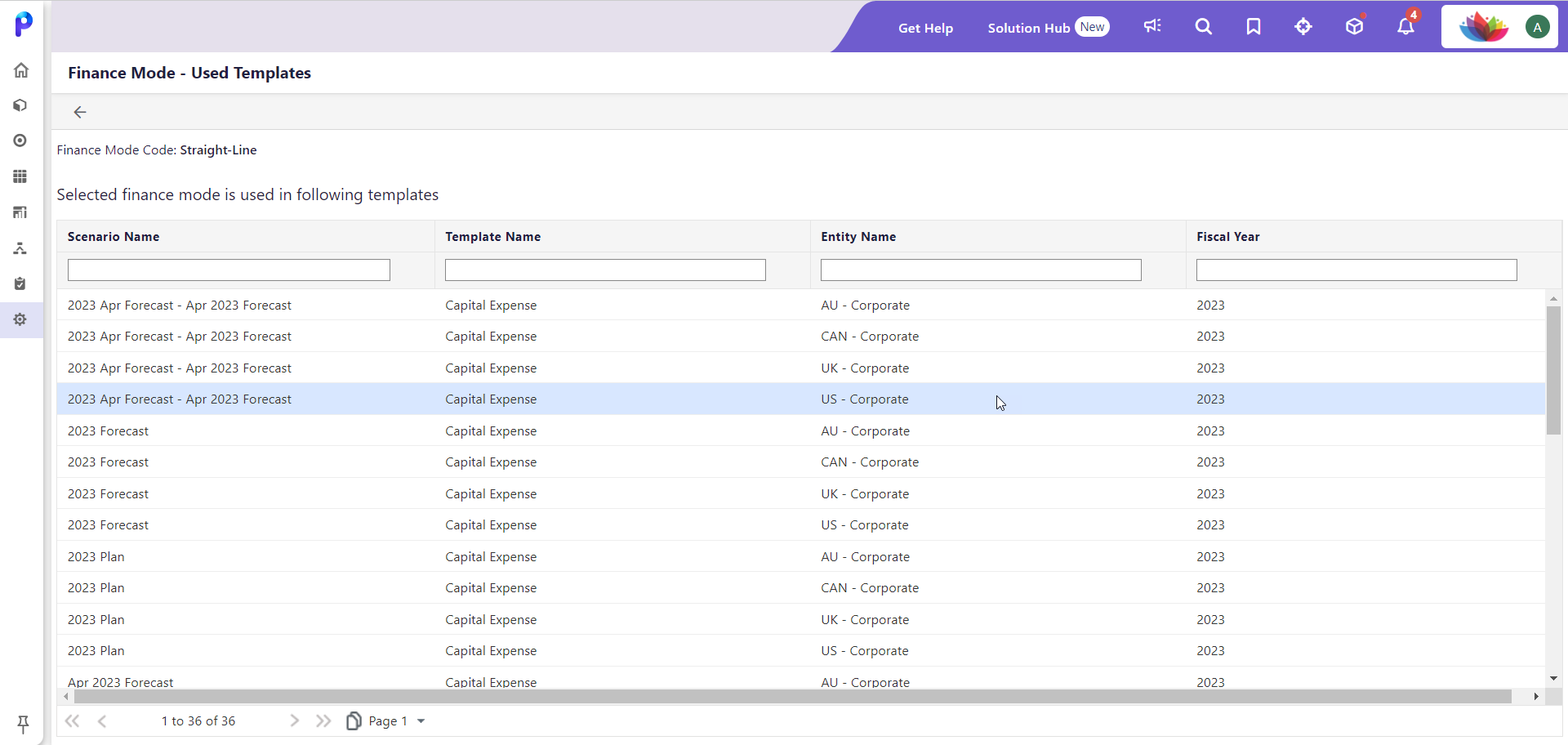- 3 Minutes to read
- Print
- DarkLight
- PDF
Accessing Capital Templates
- 3 Minutes to read
- Print
- DarkLight
- PDF
You can ensure users have the security permissions to access the scenario and open the template from the Planning Control panel.
Ensure users have access to the scenario and that they have the correct approval role to perform budget input and mark templates complete.
To provide users with scenario access:
Navigate to Maintenance > Admin > User Management.
Select the user.
Click the More list box.
Select Scenario Access.
Check the box next to every scenario you want to user to have access to.
Click Save.
To create an approval role and provide users with approval role access:
Navigate to Maintenance > Admin > User Management.
Click the Approval Role tab.
Click Add.
Enter an approval role code and name.
Select the approval actions you want the approval role to be able to perform in the Planning Control Panel.
Select Capital Templates. Provide the approval role with the ability to perform template input or just view a template. Select if you want the approval role to be able to mark the template complete. You can also select All so that the approval role can perform template input and mark templates complete.
Click Save.
Return to the User page.
Select a user and click the More list box.
Select Approval Role Setup.
On the Approval Role Setup page ensure the user is listed at the top.
Click the cell under Level 1, then select the budget entity you want to give the user an approval role for.
Click the cell under the Role column. A list of roles for the user for the budget entity appears (Budget Approver, etc.). Select a role, as defined on the Approval Role page, to associate with the user.
Click the cells under columns Level 2, Level 3, and so forth, to add drill-down capabilities to associate with role privileges. (For example, Level 1 might be associated with a worldwide organization, Level 2 with the American branch of the organization, Level 3 with the organization’s California offices, etc.)
Use the add [+] icon to add more rows to the grid if you want to assign more approval roles for the user. (To add multiple rows, add the number of rows in the text field to the left of the add [+] icon.)
To disassociate a role for the user, as well as all associated privileges, select the row then click delete.
Click Save.
Now that all setup is performed and user security is complete, the template can be opened via the Planning Control Panel in Input mode.
End users can input capital cost, depreciation, and accumulated depreciation for assets.
Capital Budget Report
The Capital Budget Report, accessed from the Planning Control Panel, provides information on the value of assets and expenditures in the currency of the budget entity.
Viewing the Sum of all Capital Expenditure in Common Currency
While the Capital Budget Report shows the value of assets and expenditures in the currency of the budget entity they were loaded against, it does not show different currencies when you run it for multiple budget entities with different currencies. So, if you want to show expenditure in common currency, there are two options:
Export the Capital Report to Excel, and convert it to local currency there.
Set up the Capital template so that the additions are saved to a statistical account in the reporting cube that would have both LC and CC amounts. These amounts are saved based on the budget entity details and do not include common currency for the individual assets. This works for newly planned assets and does not affect any assets already planned.
Asset Report
The Asset Report is available from the Asset page (Maintenance > Capital > Asset Setup > Asset ). Click the Report icon to view all templates the asset is associated with.
Finance Mode Report
This report displays all the templates a selected finance mode is used in. Navigate to Maintenance > Capital > Asset Setup, and click the Finance Mode tab. Select a finance mode and click the Report button. An example report is shown below.


